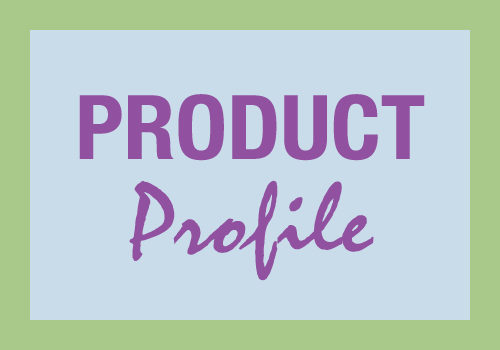Q: What is the difference between folic acid and folate, and what is their importance in the body?
A: Folic acid is the fully oxidized form of folate used in most dietary supplements and fortified foods because of its proven stability. It must be reduced and methylated to folate’s metabolically active form, L-5-methyltetrahydrofolate (often referred to as 5-MTHF or L-methylfolate or (6S)-5-methyltetrahydrofolate) by the liver after absorption via the intestine in order to be transported to and utilized by the body’s tissues. Once folic acid has been reduced to L-methylfolate, it functions as a methyl group donor for three metabolically interrelated cycles and is vital for:
• Growth and maintenance of all cells because it is essential for DNA and RNA  synthesis
synthesis
• Supporting cardiovascular and cognitive health by reducing the cytotoxic effects of elevated homocysteine levels
• Elevating mood by increasing the production of neurotransmitters like serotonin, which may help regulate mood and sleep
• Reproductive health by improving folate status in pregnant women to prevent neural tube defects in the developing fetus
• Generating energy and endurance by providing oxygenated red blood cells throughout the body
• Neurological health by circumventing the risk of masking vitamin B12 deficiency, as is seen with regular folic acid supplementation
Q: What causes folate deficiency, and who  would benefit from supplementation?
would benefit from supplementation?
A: Folate deficiency is usually a result of inadequate dietary intake, but it can also be attributed to dietary malabsorption or alcoholism. Additionally, women who are pregnant or lactating have a higher nutritional demand for folate. The tell-tale sign for deficiency is megaloblastic anemia, a blood disorder characterized by unbalanced DNA synthesis resulting in larger than normal red blood cells. Other symptoms and signs of folate deficiency include: weakness, fatigue, irritability, headache, difficulty concentrating, cramps, palpitations, shortness of breath and elevated homocysteine. Those who would benefit from folate supplementation include:
• Seniors over 60
• Individuals taking certain meds (e.g., methotrexate and fosphenytoin [Cerebyx] treatment)
• Alcoholics
• Sufferers of cognitive conditions (i.e., memory loss, depression)
• Individuals with heart conditions (i.e., elevated homocysteine levels)
• Pregnant/lactating women to reduce the chance of neural
tube defects


Q: What form of folate is best for me: folic acid OR the calcium or glucosamine salts of methylfolate?
A: Folic acid is the inactive form of folate used in most dietary supplements and fortified foods because of its proven stability. However, it must be reduced and methylated to folate’s metabolically active form, L-methylfolate, by the liver. The nutritional scientists at Bluebonnet selected the active, glucosamine salt form of L-methylfolate (Quatrefolic®) instead of the calcium salt form since it possesses greater stability, solubility and bioavailability. Plus, Quatrefolic® has an excellent safety track record, which is why it has been generally recognized as safe (GRAS) by the U.S. Food and Drug Administration. Bluebonnet’s EarthSweet® Chewables CellularActive® Methylfolate 400, 800 and 1,000 mcg Tablets provide Quatrefolic®, the patented and branded glucosamine salt of (6S)-5-methyltetrahydrofolate that delivers a vegan source of L-methylfolate that is immediately bioavailable. In fact, it outshines the calcium salt forms of L-methylfolate available in the marketplace since Quatrefolic® provides superior bioavailability (by 10%), is 100-times more soluble in water and is far more stable. Perhaps most importantly is Quatrefolic’s proven safety track record via in vitro and in vivo mutagenicity, genotoxicity and acute toxicity studies.

|
| The Dietary Reference Intake (DRIs) were developed by the U.S. National Academy of Sciences to set reference values for planning and assessing nutrient intake for healthy people. DRIs incorporate two reference value: the Reference Daily Intake (RDI, the daily intake level that is adequate for 97–98% of the population in the United States where the standards were set) and tolerable upper intake levels (UL, the highest level of intake that is known to avoid toxicity). The UL for folate refers to only synthetic folate, as no health risks have been associated with high intake of folate from food sources. |
Q: What is the most effective delivery form of folate?
A: Chewable forms offer better flavor, greater ease of administration, increased compliance and most importantly, enhanced digestibility when compared to capsules or caplets. The absorption rate is much faster with a chewable formula. In fact, capsules and capletstypically take between 30 and 45 minutes to break down—the disintegration/dissolution time set by the U.S. Pharmacopeia—whereas liquids and chewables are assimilated in little to no time at all. Consumers who have difficulty swallowing are also looking for an easier way to bridge the nutrient gaps in their diets, and naturally delicious chewable or liquid dosage forms lead to improved compliance.
So, if any of your customers require folate or are prone to folate deficiency and need immediate resolve, look to Bluebonnet for kosher-certified, gluten- and soy-free, 100% vegan EarthSweet® Chewables CellularActive® Methylfolate raspberry-flavored tablets—available in multiple potencies—to help quickly promote the proper growth and maintenance of cells, elevate mood, generate energy, improve endurance and support cognitive, cardiovascular  and reproductive health.
and reproductive health.
Trisha Sugarek MacDonald holds a Master of Science in Nutrition from Texas Woman’s University and also a Bachelor of Science Degree in Nutrition and Foods from Texas State University. Mrs. MacDonald is currently the Director of Research & Development as well as the National Educator at Bluebonnet Nutrition where she investigates new ingredients, directs the launch of new products, and provides industry training on numerous subjects as it relates to the connection between nutrition and health. She is a frequent editorial contributor and lecturer on the benefits surrounding the responsible use of supplements.
Published in WholeFoods Magazine, February 2015









